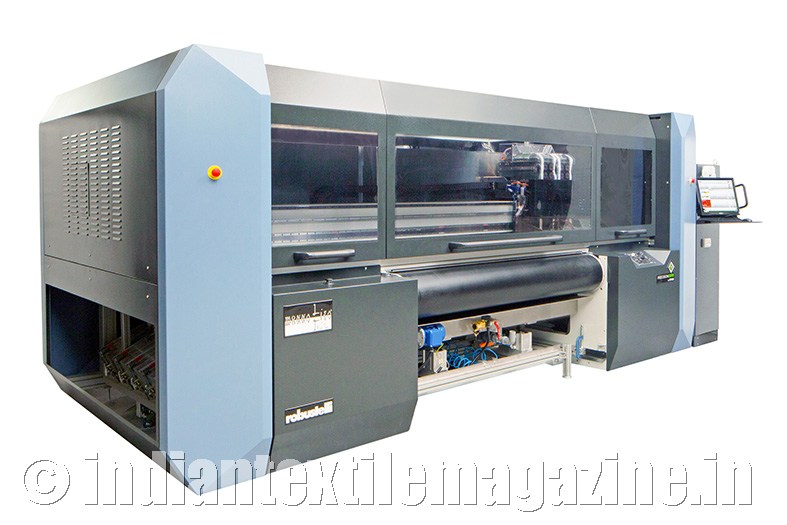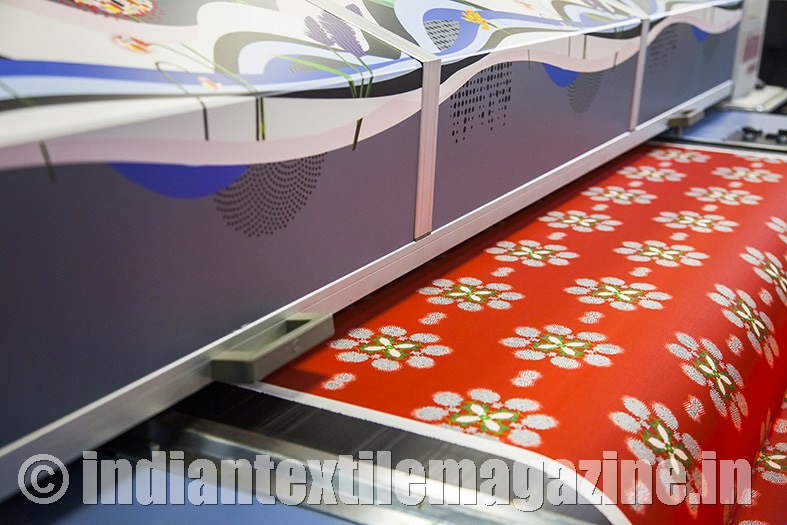Print is undoubtedly one of the most varied, creative and innovative industries in the world. With the different types of work on offer, one of the most diversified markets is textile print, ranging from T-shirts and dresses to soft signage and home furnishing.
DCC Print Vision is one of the most respected solution providers in the digital textile print market and is able to offer the latest technology solutions for various textile print requirements.
DCC, in collaboration with Epson, launched Monna Lisa Evo-Tre, a remarkable digital textile inkjet printer, in the Indian market to cater to various printing requirements of the industry. It revolutionised the textile market by offering a digital tool that could shift from the sampling phase to reliable industrial production. It is an industrial inkjet digital textile printer jointly developed by Epson and the leading Italian textile manufacturing equipment manufacturer Robustelli s.r.l.
Epson provided Robustelli with inkjet technology such as Micro Piezo print heads and ink supply mechanism components, enabling the two companies to commercialize a digital textile printer that can handle volume printing.
Combined, the printer and ink enable the beautiful gradations and color reproduction typical of inkjet printing, with the flexibility to print on a range of fabrics, including silk, cotton, nylon and polyester.
In addition, in the high quality mode (1200 dpi – 4 pass), it achieves high-speed printing of about 147 m²/hr with 32 print head model. The Monna Lisa Evo Tre 16 print head model offers high speed of 63 m²/hr with high resolution printing (1200 dpi – 6 pass) and, with the robustness to operate around the clock, it offers high productivity for volume printing.
The Monna Lisa success is due to several factors. Not only is its quality and reliability crucial, and the printheads, inks and mechanics unique, continuous research ensures its excellence.
Monna Lisa is a viable alternative for the textile market due to its several key characteristics, including reducing production time, ability to print on any type of fabric or using any design variant. It is possible to streamline sampling and prototyping production at a drastically reduced cost and with the best quality. Lower energy and water consumption make it a cutting-edge printer in the extraordinary evolution of printing technologies used in the textile industry.
Epson’s belief in the potential of textile printing is based around a shift in the industry from analog to digital techniques. While traditional analog printing techniques require plates to be pressed against the fabric, digital techniques mean that fabric can be printed out without the need for expensive plates. This ensures that digital textile printing can be achieved at lower cost and in shorter times.

